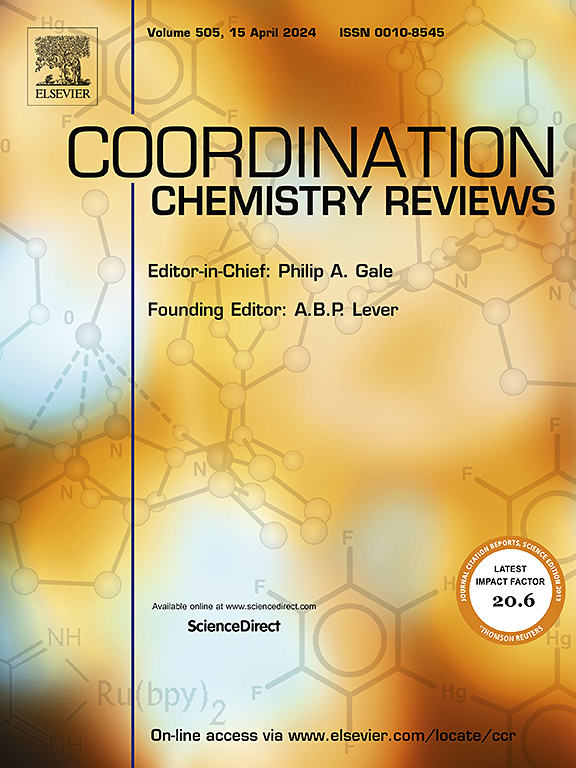Bridging the nanoscale: Exploring quantum dot architectures on nanosheets and nanotubes for efficient hydrogen production
IF 20.3
1区 化学
Q1 CHEMISTRY, INORGANIC & NUCLEAR
引用次数: 0
Abstract
As we delve into the nanoscale realm, exploring nanostructures has unveiled a fascinating interplay between morphology and function. The intricate architecture of nanomaterials plays a vital role in determining their optical and electronic properties. 0-, 1- and 2-dimensional materials each possess unique features that arise from quantum confinement effects, distinct surface-to-volume ratios and other dimensional restrictions that influence their nanoscale behaviour. This offers a powerful tool for designing advanced catalysts with optimized performance. The global community's intensified commitment to decarbonization and transition toward sustainable energy systems has made carbon-neutral green hydrogen fuels a pivotal focus of innovation and investment. The strategic design of catalysts is crucial for optimizing water-splitting processes. We present a comprehensive review of the latest advancements in tailoring the structure and performance of nanotubes and nanosheets by forming heterojunctions with quantum dots, exploring their synergistic effects and exciting potential for efficient and sustainable hydrogen production. The fundamental need, diverse approaches and mechanistic aspects of water splitting are addressed herein. Further, the future challenges and opportunities in catalyst design for hydrogen evolution are explored. This state-of-the-art review offers insights into the development of highly efficient, specifically engineered catalysts for hydrogen production.

连接纳米尺度:探索纳米片和纳米管上的量子点结构,实现高效制氢
本文章由计算机程序翻译,如有差异,请以英文原文为准。
求助全文
约1分钟内获得全文
求助全文
来源期刊

Coordination Chemistry Reviews
化学-无机化学与核化学
CiteScore
34.30
自引率
5.30%
发文量
457
审稿时长
54 days
期刊介绍:
Coordination Chemistry Reviews offers rapid publication of review articles on current and significant topics in coordination chemistry, encompassing organometallic, supramolecular, theoretical, and bioinorganic chemistry. It also covers catalysis, materials chemistry, and metal-organic frameworks from a coordination chemistry perspective. Reviews summarize recent developments or discuss specific techniques, welcoming contributions from both established and emerging researchers.
The journal releases special issues on timely subjects, including those featuring contributions from specific regions or conferences. Occasional full-length book articles are also featured. Additionally, special volumes cover annual reviews of main group chemistry, transition metal group chemistry, and organometallic chemistry. These comprehensive reviews are vital resources for those engaged in coordination chemistry, further establishing Coordination Chemistry Reviews as a hub for insightful surveys in inorganic and physical inorganic chemistry.
 求助内容:
求助内容: 应助结果提醒方式:
应助结果提醒方式:


